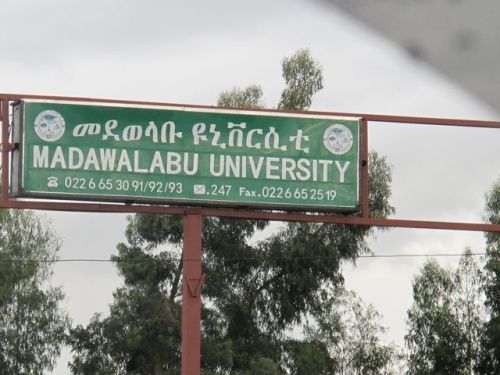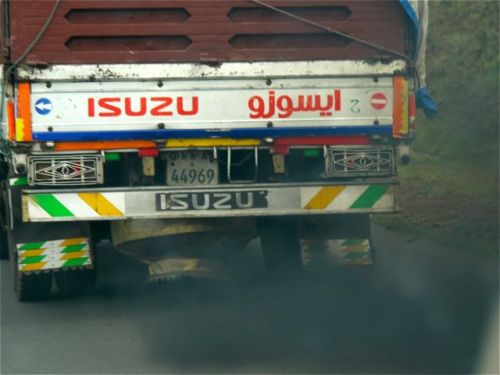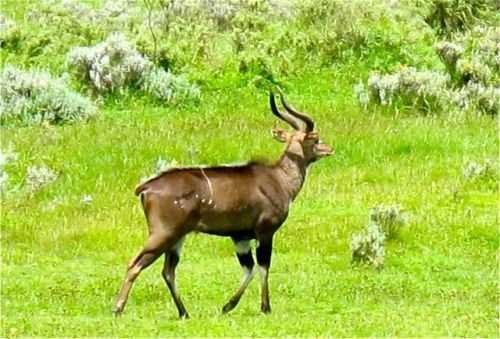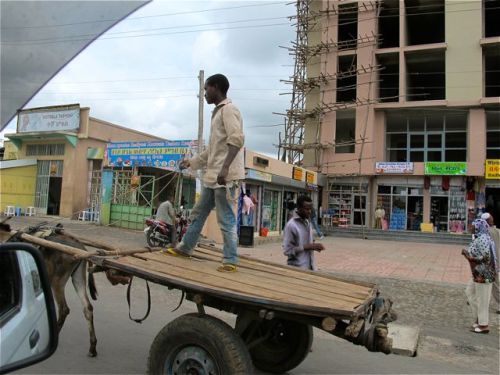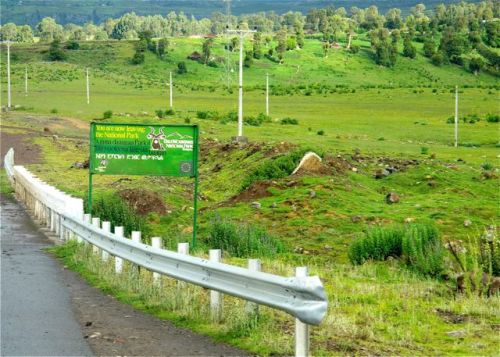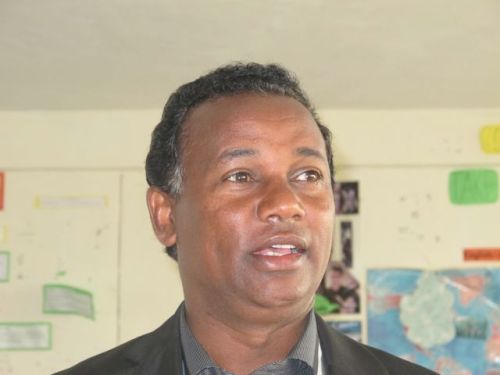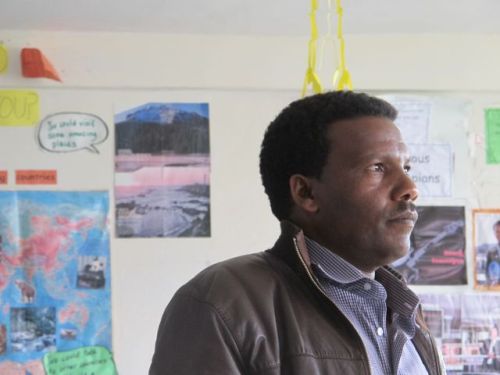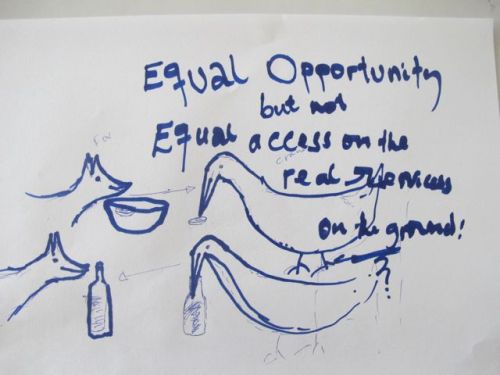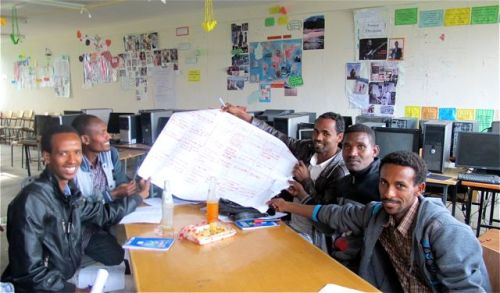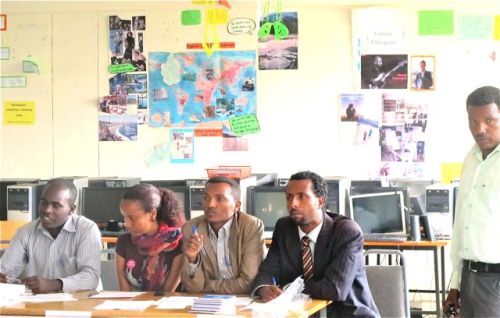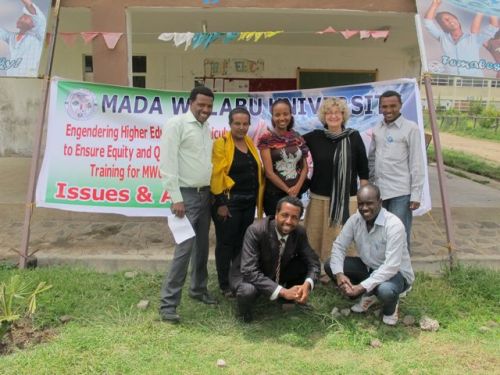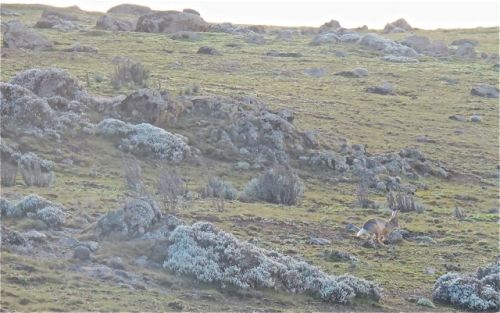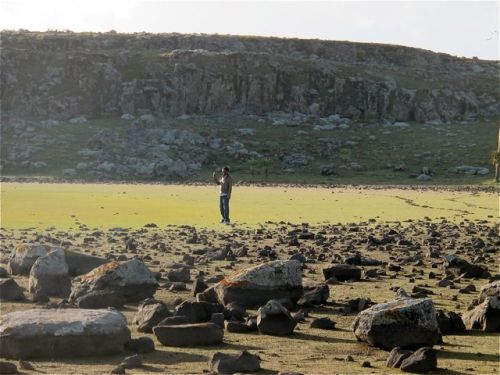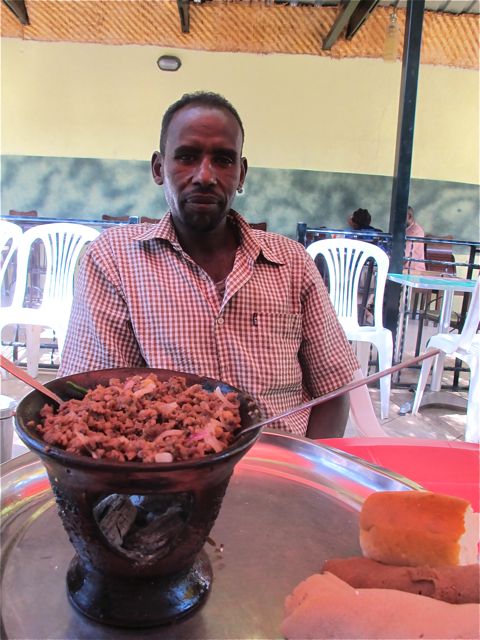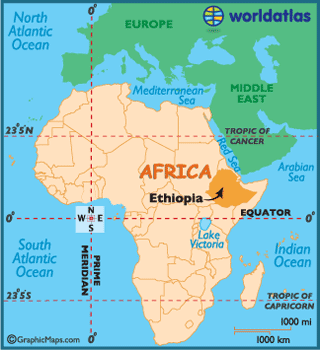On March 15, one week after International Women’s Day, I was amazed to receive an email from Atota Bedane announcing that a group of 5 teaching staff at Mada Walabu University had put together a gender proposal and were seeking the support of our Gender Directorate.
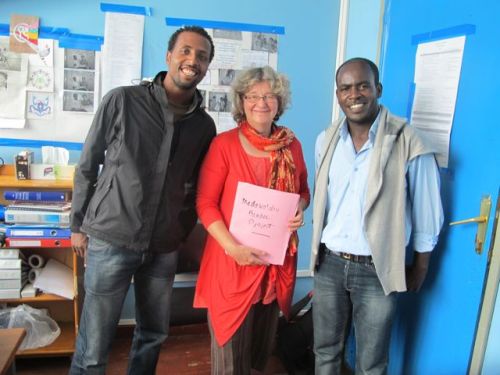 “We would like your overall support, at least professionally, your knowledge, skills and expertise/experience on the issue. As a result, we want to recruit at least 2 experts from the Ministry Gender Directorate, including Marian Dodds, as trainers.”
“We would like your overall support, at least professionally, your knowledge, skills and expertise/experience on the issue. As a result, we want to recruit at least 2 experts from the Ministry Gender Directorate, including Marian Dodds, as trainers.”
Atota had participated in several gender workshops I had done over the past couple of years in his role as a Higher Diploma Leader so that’s how he knew me. A well thought out proposal was attached to his message outlining what they had already done – amazing! I replied that I would be pleased to assist and asked when would they next be in Addis to discuss the plan.
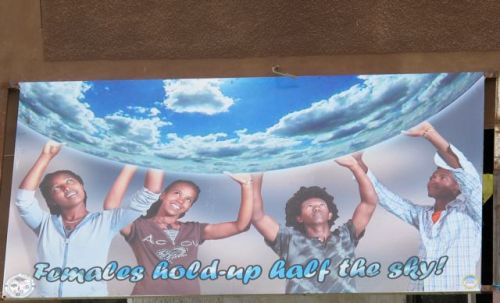 Atota told me that he had some students pose and computer science students made this design to include on their proposal; later it was made into attractive banners
Atota told me that he had some students pose and computer science students made this design to include on their proposal; later it was made into attractive banners
A week or two later Atota and Kedir arrived at my office to discuss their plan. Why do you two guys care so much about gender issues? I was simultaneously amazed at their initiative to draft an ambitious proposal to “Engender Higher Education Curricula to Ensure Equity and Quality of Education” and curious at such passionate concern for gender equality by two well educated young men (both have Masters degrees). One said he had attended a lot of gender workshops and had realized how important an issue it was for the country’s development. Both had seen female relatives suffer from lower expectations and opportunities. As University instructors they also wanted their female students to be successful.
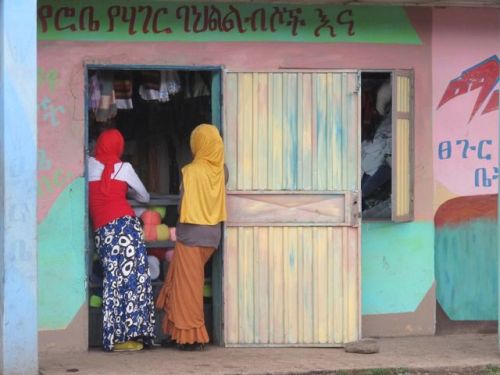 Young women outside a shop in Robe, Oromia
Young women outside a shop in Robe, Oromia
The statistics speak volumes. Imagine the uphill struggle for an Ethiopian girl to make it all the way to grade 12 graduation, then be assigned a faculty and university, not necessarily her first choice of studies and likely far from home, only to be put on “warning” due to low grades and in some cases dismissed after the first semester?
Currently the MoE Gender Directorate is preparing a new Gender Education Strategy for the Education and Training Sector and the issues have become all too familiar to me after months of discussions and feedback sessions with educators working on the ground. The entire education system from policy level to the academic environment to physical infrastructures (think segregated hygienic toilets with locks and water available – only a dream in most schools here) present extra challenges for female students and staff.
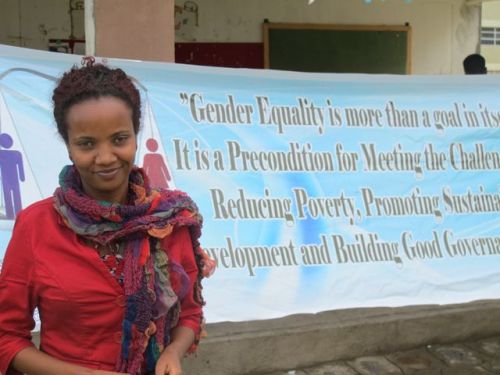 MWU Gender Officer Abigiya poses in front of a banner that reads “Gender equality is more than a goal in itself. It is a precondition for meeting the challenges of reducing poverty, promoting sustainability and building good government”
MWU Gender Officer Abigiya poses in front of a banner that reads “Gender equality is more than a goal in itself. It is a precondition for meeting the challenges of reducing poverty, promoting sustainability and building good government”
The slogan “A country cannot develop without the full participation of all its’ citizens, both females and males” appears to have become the rallying cry and since about 96% of the academic and management staff are male, it is men who are often leading the way. The World Bank estimates that if Ethiopian women were fully integrated into the economy the GDP would rise by 1.9% per year, contributing much to poverty reduction. For universities, the key challenge is to make all campuses “Female Friendly” despite resource shortages.
Twice Atota and Kedir made the 800km round trip from Mada Walabu University to Addis to meet with me to share their ideas and gather resources as their plans evolved. I helped connect them with others in the Ministry, including my director Mekdes Eyoel who offered advice, encouragement and support to move things forward. Their flash drives were filled with gender resources from my computer. Despite Internet challenges they managed to email me drafts of their plans and I sent them feedback. Their university president was fully behind the plan and the requisite bodies approved enough of their proposed budget to allow them to complete the gender sensitization process and begin action planning for students and staff before the end of the academic year.
At the 11th hour the MoE could not supply a car and driver so they overcame bureaucratic challenges I don’t even want to imagine to arrange for a car from their university to collect me and my MoE colleague Zaid and to bring us back! Kedir even made the trip to Addis with a terrific driver named Daniel just to ensure it all went smoothly.
On June 17th I was happy to be on the road and moving away from the pollution of the congested highway out of Addis…!
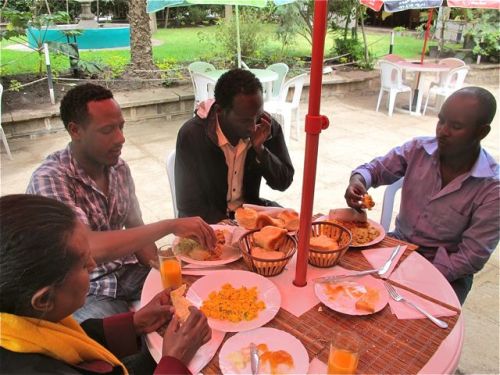 Breakfast stop at Mojo – Zaid, Daniel the driver, Getema and Kedir (L-R)
Breakfast stop at Mojo – Zaid, Daniel the driver, Getema and Kedir (L-R)
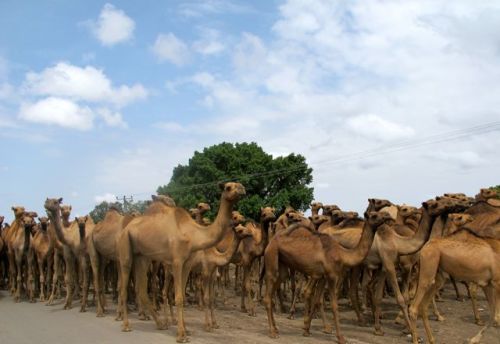 Along the Rift Valley lowlands we encountered a huge group of camels, likely on their way to the market
Along the Rift Valley lowlands we encountered a huge group of camels, likely on their way to the market
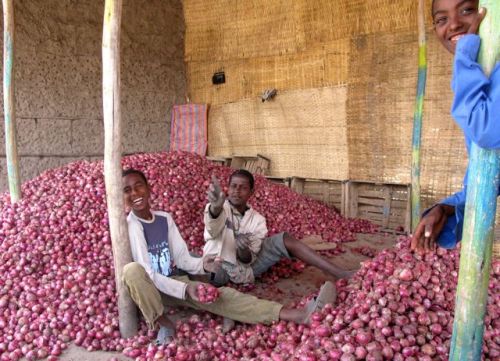 Ethiopian road trips invariably involve a stop or two to buy some of what’s in season – in this case onions!
Ethiopian road trips invariably involve a stop or two to buy some of what’s in season – in this case onions!
After our buna break at Shashemene the landscape began to shift to narrower and more winding roads and the mountain climbing began, a suitable metaphor for the work ahead. I don’t imagine many people are invited to assist an entire university in “Engendering the curriculum” and I felt fortunate to be invited to help. Weeks earlier I had wondered if we would overcome the assorted challenges to pull this training off so, as I inhaled the fresh mountain air, I was especially pleased to be on this road trip 430 km southeast of Addis to Mada Walabu University in Robe, a town of about 70,000 in the Oromia region of Ethiopia.
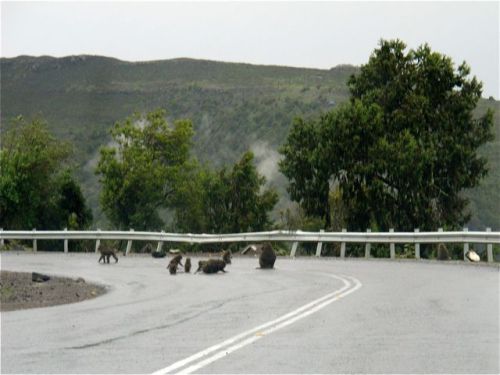 Suddenly a baboon family appeared on the road ahead
Suddenly a baboon family appeared on the road ahead
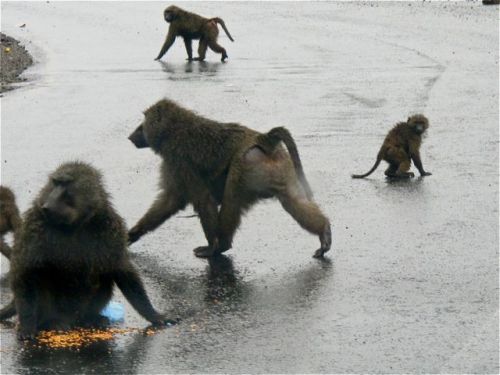 Unexpected delights of the journey
Unexpected delights of the journey
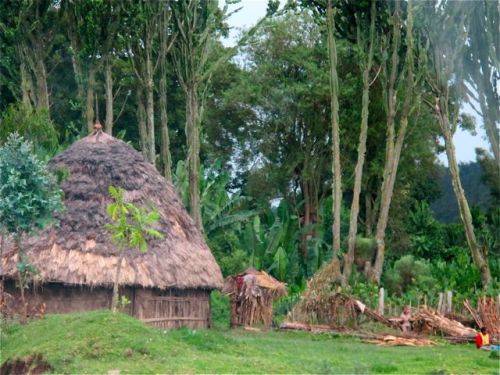 Traditional houses dotted the roadside
Traditional houses dotted the roadside
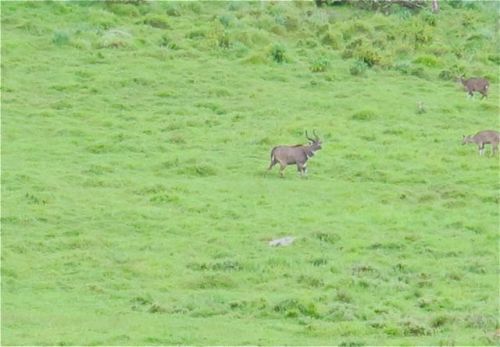 We saw nyalas off in the grassy areas
We saw nyalas off in the grassy areas
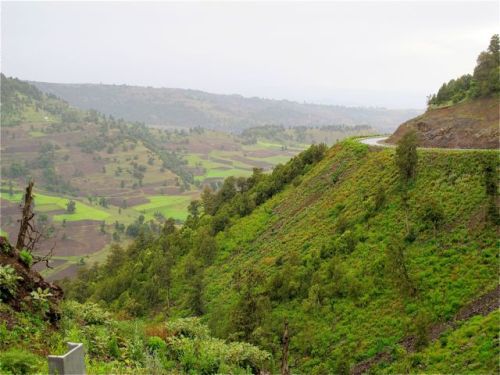 And climbed higher and higher into the mountains
And climbed higher and higher into the mountains
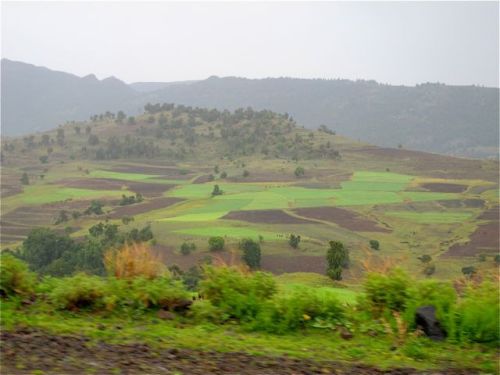 Abundant fields of wheat, barley and maize – delightfully lush patchworks of colour
Abundant fields of wheat, barley and maize – delightfully lush patchworks of colour
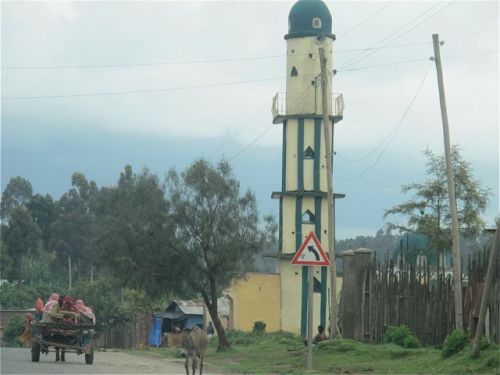 Many more mosques in this part of the country
Many more mosques in this part of the country
Standing up on garis seems to be common practice here – must have pretty good balance!
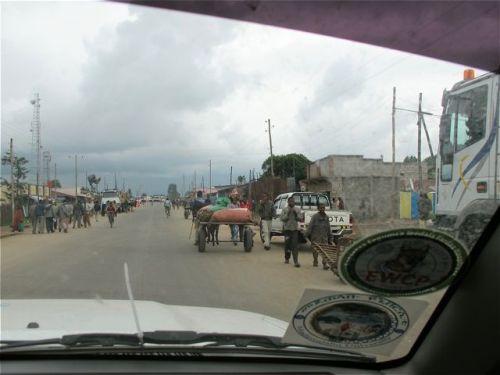 Looks like rain up ahead as we get closer to out destination
Looks like rain up ahead as we get closer to out destination
Warmly welcomed by Atota and Kedir, Zaid and I settled into a great hotel they had arranged for us in the nearby town of Goba and the team met over dinner to finalize the plans for the next day’s session, planned for about 10% of the 400 instructors at the university. Mada Walabu is newer university with about 5000 students. It is 6 years old and most of the construction is complete – they are fortunate to have a large ELIC/HDP building with offices, open space and a classroom.
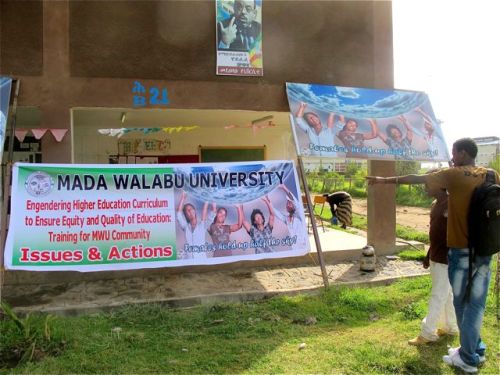 Next morning we arrived to see the key message of the events announced on a giant banner!
Next morning we arrived to see the key message of the events announced on a giant banner!
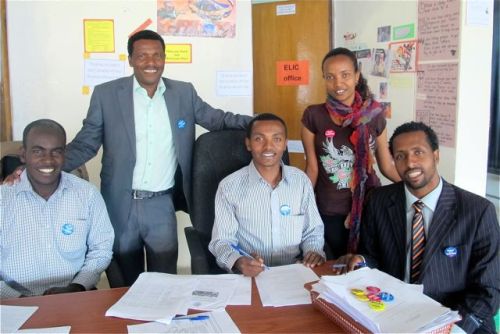 The planning team: Kadir, Tesfaye, Kefale, Abigiya and Atota (L-R)
The planning team: Kadir, Tesfaye, Kefale, Abigiya and Atota (L-R)
This dedicated team has a plan to educate and activate the university community (600+ students,150 instructors,450 administrative support staff and 50 top managers) to effect changes that will advance gender equality and make MWU a model for others to follow…
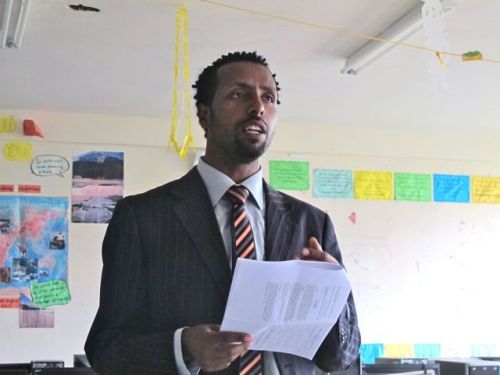 Atota opened the training day for the instructors with an outline of the project stating that the gender issue is a burning issue that is on the global, national and institutional agenda. He said that gender equality is a key to poverty reduction, sustainable development and good governance in any society. Next he introduced the university president who is very supportive of this work
Atota opened the training day for the instructors with an outline of the project stating that the gender issue is a burning issue that is on the global, national and institutional agenda. He said that gender equality is a key to poverty reduction, sustainable development and good governance in any society. Next he introduced the university president who is very supportive of this work
University President Dr Ketema Meskela spoke clearly and directly about the importance of gender equality to the university community and noted the key role played by instructors in moving things forward. I later learned over dinner that Dr Ketema spent four years in China doing his doctorate and can speak Mandarin!
Tesfaye presented data on attrition rates of female students to provide concrete examples of the current situation
Then we got down to a series of mini-sessions aimed at highlighting both the issues and actions that are needed to address gender equality at their university with an emphasis on curriculum and instruction. Three enthusiastic young Peace Corps volunteers working in the region were also invited to participate and may be able to offer additional support, especially for the female students as the project moves forward.
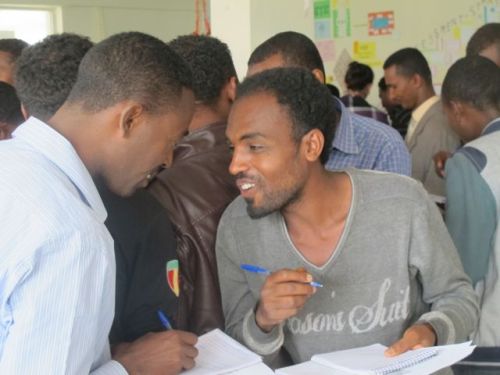 A yes/no survey warmed things up. Do you prefer a son to a daughter?
A yes/no survey warmed things up. Do you prefer a son to a daughter?
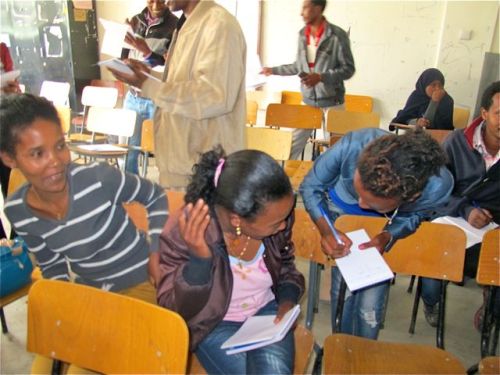 Do you think it is possible to achieve equality? Of the 400+ teaching staff, only 17 are female
Do you think it is possible to achieve equality? Of the 400+ teaching staff, only 17 are female
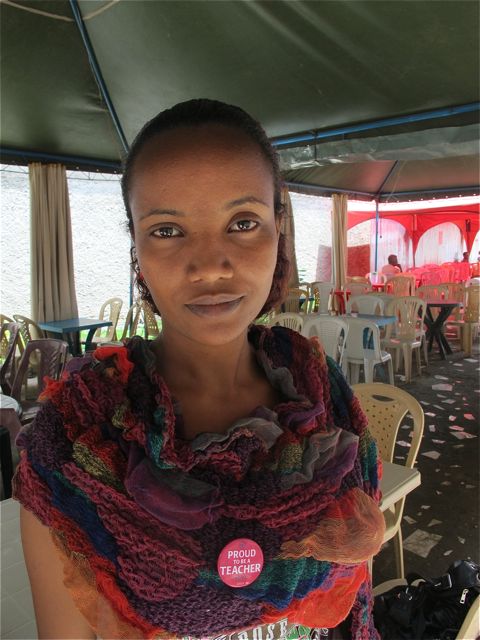 Team member Abigiya is one of them! She has a Masters degree in Biology
Team member Abigiya is one of them! She has a Masters degree in Biology
Equal opportunity but not equal access on the real issues on the ground – lesson learned about the difference between equity and equality from group discussions using the story of the fox and the crane
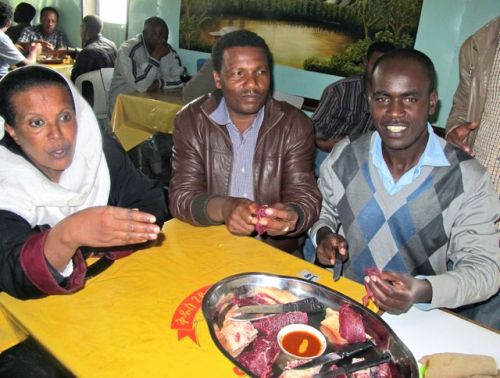 Lunch break in Roba town at their favourite cafe – serving raw meat and shekla tibs (beef cooked over charcoal)
Lunch break in Roba town at their favourite cafe – serving raw meat and shekla tibs (beef cooked over charcoal)
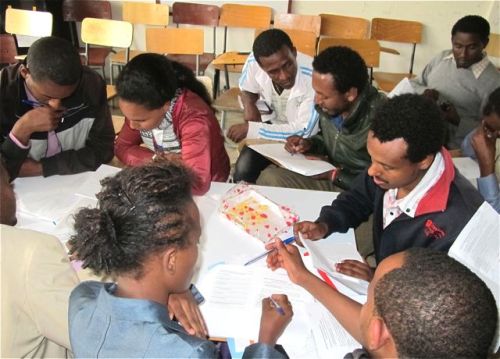 Group work on language use – a discussion on proverbs was especially popular
Group work on language use – a discussion on proverbs was especially popular
The afternoon ended with action plans being drafted and evaluations completed. The day was rated highly and many needs for further training were identified by the participants
While I summarized the evaluation forms and we further refined the plan for next day’s managerial staff training, my colleague Zaid took time to discuss the work of the MWU Gender Office
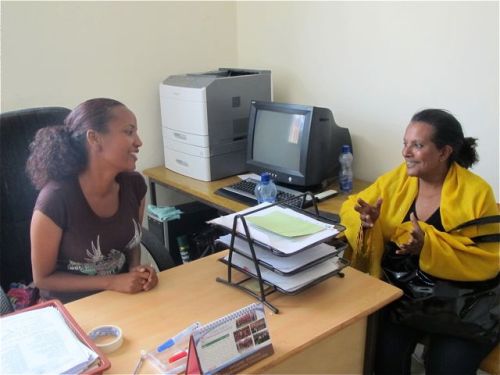 Abigiya and Zaid discuss her work in the gender office – the MoE Gender Directorate offers support and encouragement for such initiatives to increase the success of female students. Abigiya explained the sign designed to celebrate high achieving students
Abigiya and Zaid discuss her work in the gender office – the MoE Gender Directorate offers support and encouragement for such initiatives to increase the success of female students. Abigiya explained the sign designed to celebrate high achieving students
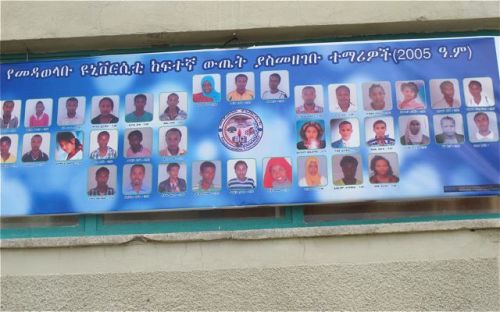 This sign, initiated by the Gender Office, is displayed on a library building to celebrate the highest achievers at the university; there are a number of female students in this category to be role models for others who follow!
This sign, initiated by the Gender Office, is displayed on a library building to celebrate the highest achievers at the university; there are a number of female students in this category to be role models for others who follow!
The gender office has a plan to add a photo banner each year of the highest achieving students to be seen as an inspiration to all the students on campus.
On Thursday we conducted the training for the managerial staff
The morning training for managerial staff began with a panel presentation by the team explaining the results of the student training the previous week and a sobering analysis of the data on females students at Mada Walabu University. Higher attrition rates for female students, the issue of Gender Based Violence (GBV) identified by students on campus and the lack of gender responsive pedagogy set the backdrop for the managers to begin a deeper analysis of the issues and identify opportunities for actions to improve the situation within their respective portfolios.
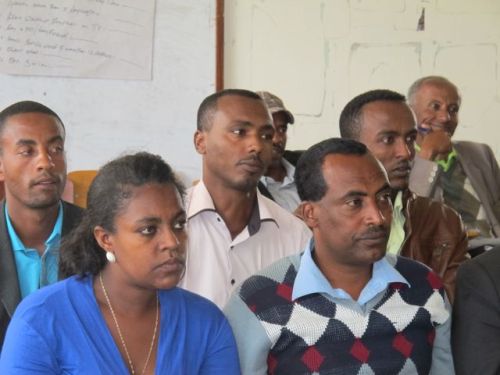 Managerial staff listen closely
Managerial staff listen closely
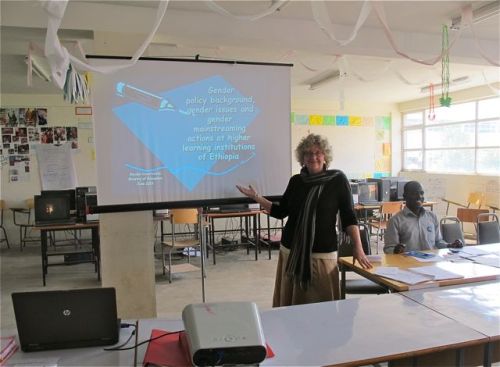 I presented a “gapped lecture” titled “Gender policy background, gender issues and gender mainstreaming at higher learning institutions in Ethiopia” with time for mini-discussions after each topic
I presented a “gapped lecture” titled “Gender policy background, gender issues and gender mainstreaming at higher learning institutions in Ethiopia” with time for mini-discussions after each topic
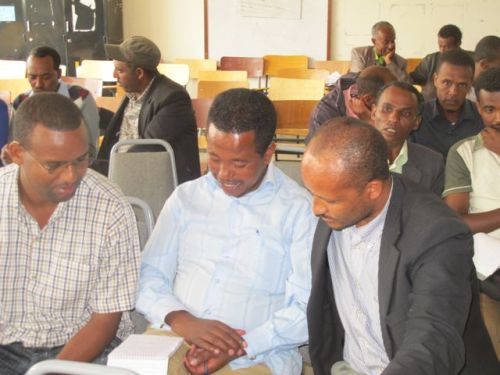 Discussing information presented as it applies to their area of responsibility be it finance, clinic, support staff, public relations, etc.
Discussing information presented as it applies to their area of responsibility be it finance, clinic, support staff, public relations, etc.
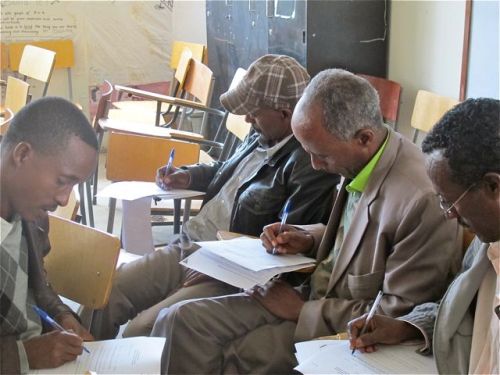 Drafting some initial action plans to mainstream gender into their work. The feedback was positive and hopeful with a request for further training at the end
Drafting some initial action plans to mainstream gender into their work. The feedback was positive and hopeful with a request for further training at the end
By the end of June this part of the project will conclude with a training for administrative support staff on the issues and the roles that secretaries, guards, cafeteria workers and others can play in creating a safe and secure environment for all. No doubt the team will be submitting a proposal to further the initiative in the next academic year.
A surprise on our last afternoon was a trip up the Bale Mountain National Park to the Sanetti Plateau where Kafale, Abigiya, Zaid and I enjoyed the fresh air and awesome views at around 4000 meters.
Described in the Bradt Guide as “The world’s largest expanse of Afro-alpine moorland…renowned for supporting the most substantial extant population of the Ethiopian wolf … other mammals are the Abyssinian hare, the endemic giant molerat, and a number of other endemic small burrowing rodents.” I got a fleeting glimpse of a wolf, managed a snapshot of a hare and side stepped many rat holes while wandering around exploring the plateau.
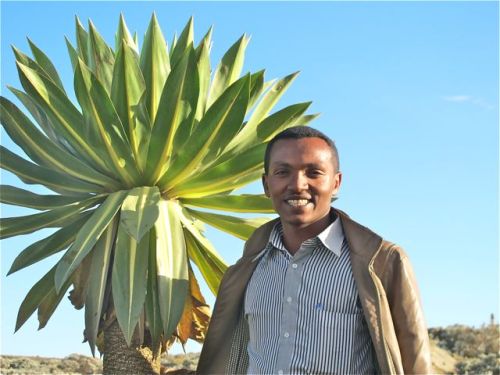 Psychology instructor Kefale was thrilled to have his first visit to this plateau and I delighted in his exuberance as we hiked past giant lobelia trees
Psychology instructor Kefale was thrilled to have his first visit to this plateau and I delighted in his exuberance as we hiked past giant lobelia trees
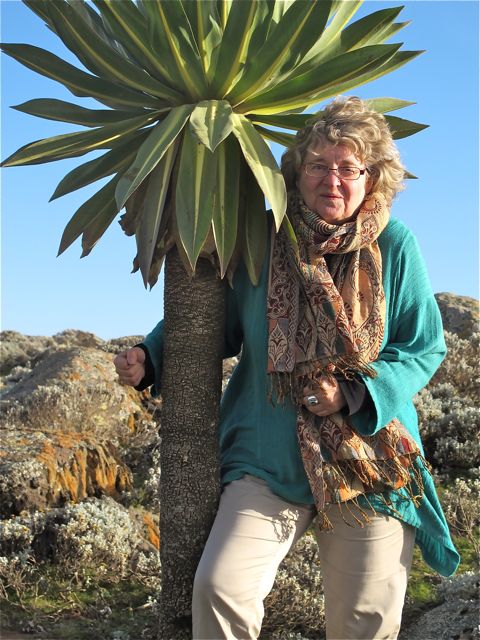 As a true Canadian, I couldn’t resist the urge to hug a tree! It was very breezy and bracingly cold.
As a true Canadian, I couldn’t resist the urge to hug a tree! It was very breezy and bracingly cold.
 Dead lobelia trees make lovely sculptures
Dead lobelia trees make lovely sculptures
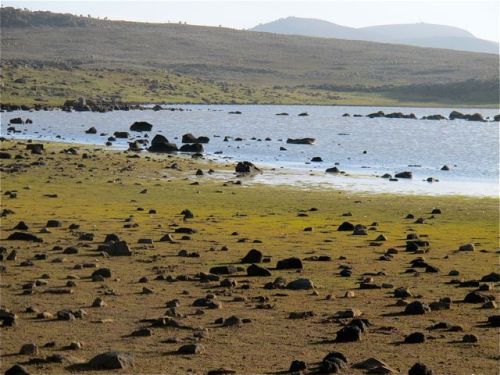 I was surprised by how many small lakes there were…
I was surprised by how many small lakes there were…
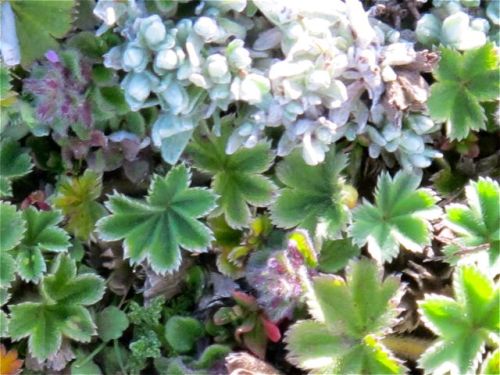 The ground cover presented fascinating miniature worlds and the air was filled with birdsong
The ground cover presented fascinating miniature worlds and the air was filled with birdsong
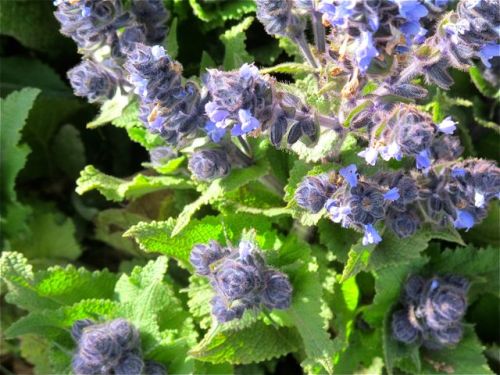 Lovely wildflowers
Lovely wildflowers  Lichen covered rocks
Lichen covered rocks
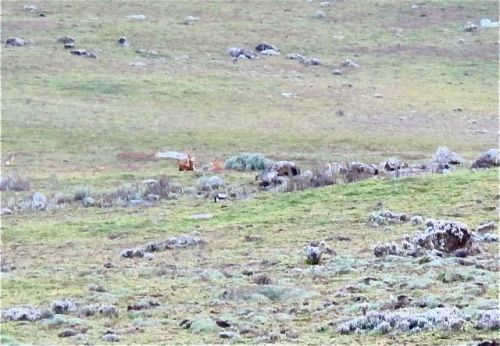 Look hard and you’ll see a couple of the endangered Ethiopian red foxes – this was a rare sighting, thanks to the park guard in the back of the truck who spotted them as we headed back down the mountain
Look hard and you’ll see a couple of the endangered Ethiopian red foxes – this was a rare sighting, thanks to the park guard in the back of the truck who spotted them as we headed back down the mountain
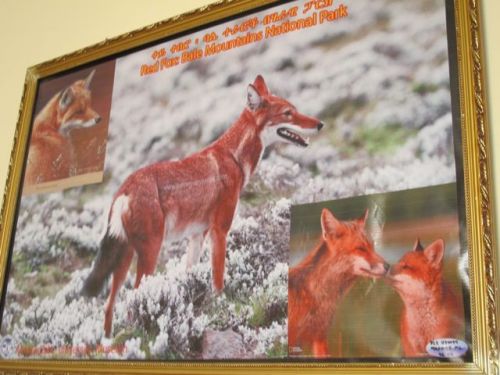 This is what they looked like in the President’s office!
This is what they looked like in the President’s office!
I wish I could have hiked there for a few days. Other parts of the park can be enjoyed on horseback and rough camping is available with several simple mountain shelters with guards. Tourism in this area is in its infancy with huge potential for growth. The university offers Eco-Tourism and Tourism Management degrees. I met the Director and hope to connect him with counterparts back in BC who might be interested in sharing ideas.
The road home on Friday was another delight with an abundance of warthogs, some baboons, plenty of nyalas and even the surprise of a very large spotted hyena loping along the roadside in broad daylight as we traveled through the Rift Valley lowlands.
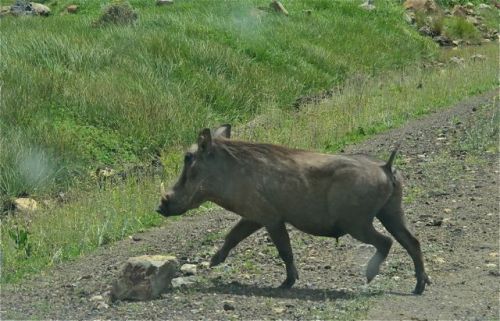 Why did the warthog charge across the road?
Why did the warthog charge across the road?
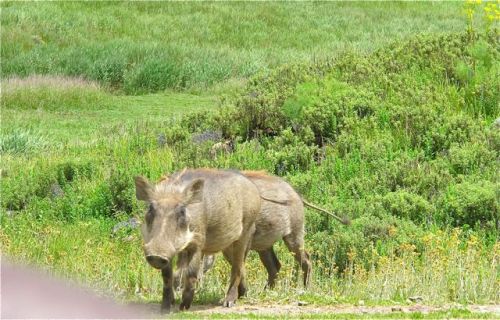 Maybe to meet up with his friend?
Maybe to meet up with his friend?
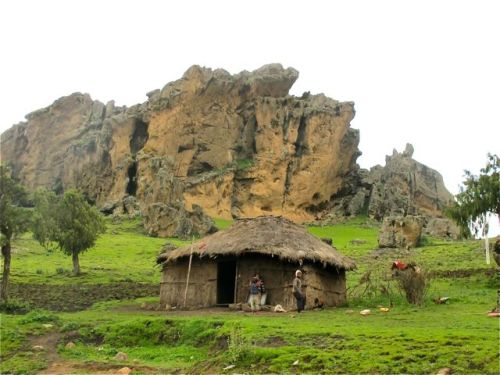 We passed this dramatic rock formation full of caves at Sebesebe. The region also has the Sof Omar Caves to explore, reputedly the largest network of limestone caverns in Africa
We passed this dramatic rock formation full of caves at Sebesebe. The region also has the Sof Omar Caves to explore, reputedly the largest network of limestone caverns in Africa
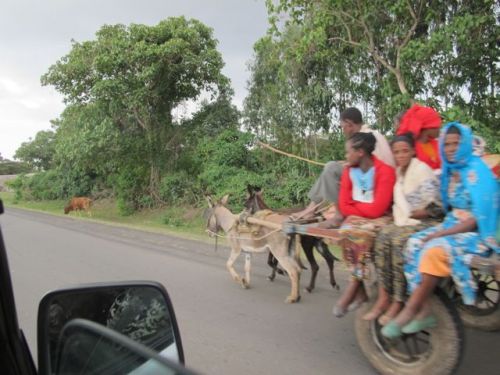 It was market day in some small towns along the route and as the journey progressed we passed many donkey carts loaded with people heading home
It was market day in some small towns along the route and as the journey progressed we passed many donkey carts loaded with people heading home
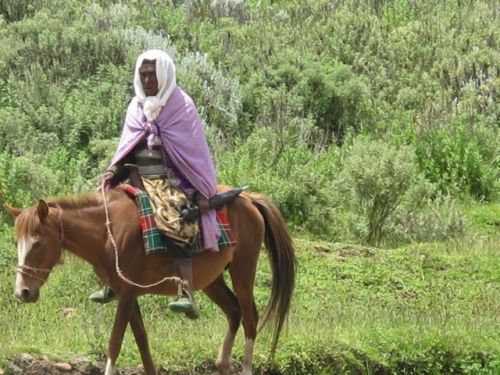 There are a lot more horses and riders in this region than I have seen elsewhere in Ethiopia, including women riders
There are a lot more horses and riders in this region than I have seen elsewhere in Ethiopia, including women riders
We took a lunch break in Shashemene and great driver Deribe had some tasty skekla ground beef with injera
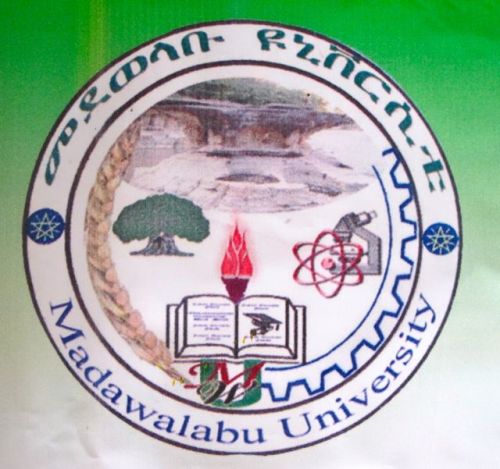 Mada Walabu University – an inspiring place to visit!
Mada Walabu University – an inspiring place to visit!
I have to say this was one of the best weeks of my time here as a gender adviser; I felt I was doing what I had dreamed I would be able to do when I signed on and, as I promised the group at MWU, if they email me when I get back home to Canada in a few weeks, I will do my best to continue to offer technical/academic support based on what they identify as their training and research needs.
Though their climb is steep I believe they are fit for the challenge and I wish them all the best. I deeply appreciate the hospitality and enthusiasm they shared; this will be a lasting great memory of my Ethiopian volunteer experience!
